15 Easy Dark Soy Sauce Substitutes
When you buy through our links, The Breslin may earn an affiliate commission. Learn more
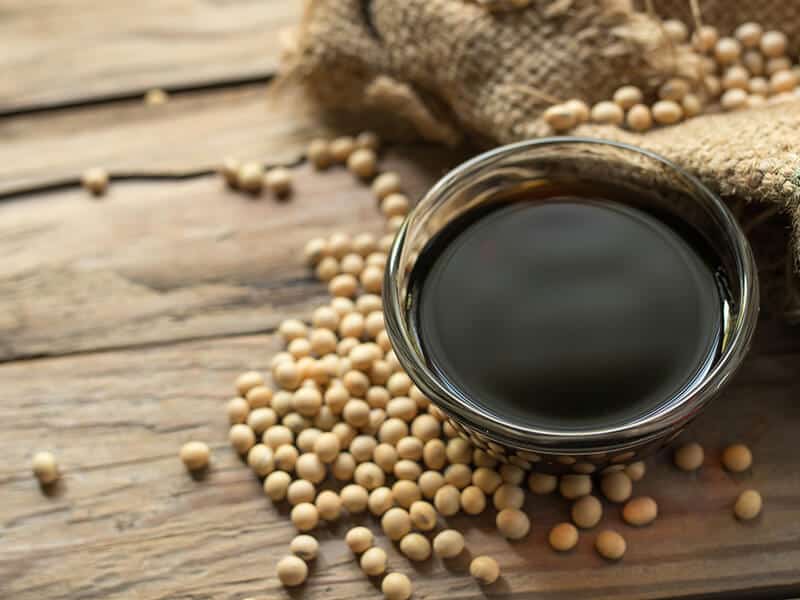
Dark soy sauce substitutes? Soy sauce is no longer strange in every American household since Asian cuisine is becoming more and more favored now. You can easily find a bottle of soy sauce in any supermarket in your city.
But there are many kinds of soy sauce. Dark soy sauce is one of them. It is an independent ingredient in many recipes. And unluckily, you cannot find them in the nearby market? Don’t worry. In this post, I will show you the closest and most excellent substitutes for this sauce.
Also, some tips about proper cooking methods for each substitute will be added. All you need to do is sit down and jump into this post.
How Many Dark Soy Sauce Substitutes Out There?
If you are wondering whether you can use other substitutes to replace dark soy sauce, you have come to the right place. YES! You can! And not only just one. More than 10 brilliant substitutes are waiting for you! Let’s scroll down to get more information!
- Double Black Soy Sauce
- Light Soy Sauce
- Mushroom Flavored Dark Soy Sauce
- Hoisin Sauce
- Oyster Sauce
- Teriyaki Sauce
- Worcestershire Sauce
- Tamari
- Maggi Seasoning
- Fish Sauce
- Miso Paste
- Balsamic Vinegar
- Liquid Aminos
- Coconut Aminos
- Homemade Dark Soy Sauce
Follow my step!
Dark Soy Sauce – The Sweetheart Of Chinese Culinary World
First of all, it is important to know the basic information about dark soy sauce. Chinese soy sauce is very diverse. Let’s glance down for a clear insight on this dark soy sauce.
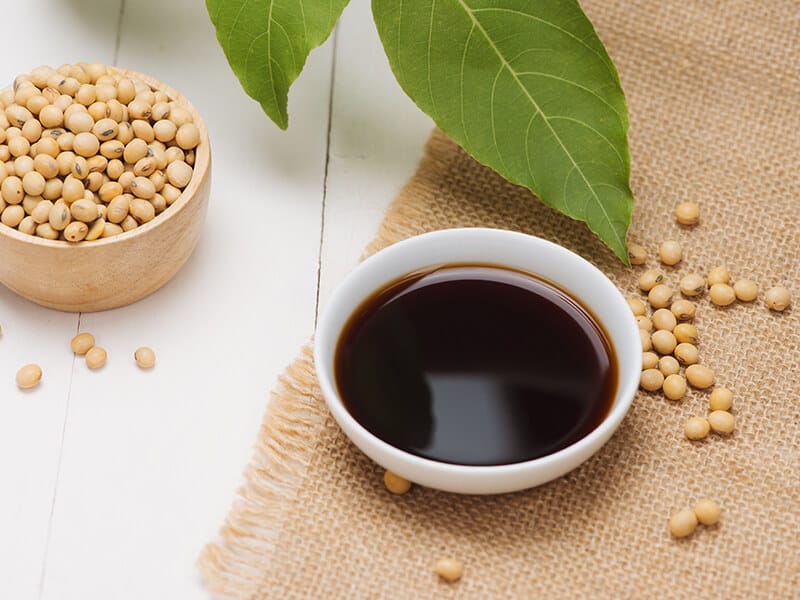
1. What Is Dark Soy Sauce?
It is a fact that many countries, such as Japan and Thailand, have their own dark soy sauce too. However, when it comes to soy sauce, Chinese soy sauce, including dark soy sauce, will almost dominate the soy sauce market.
Back to 2000 years ago, in the Han Dynasty, soy sauce was created through soybean fermentation. This liquid quickly became a part of Chinese culture and living habits.
Dark soy sauce, or also called lǎo chōu (老抽) (1), is one of the three basic kinds of Chinese soy sauce, including dark soy sauce, light soy sauce, and sweet soy sauce. Dark soy sauce is the soy sauce that takes the longest time to brew.
As a result, both its flavor and color are also much more intense.
So, what are the differences between dark and light soy sauce?
2. What Does Dark Soy Sauce Taste like?
As its name suggests, dark soy sauce has a signature dark color, almost the darkest one. Moreover, because it is also mixed with molasses (or caramel) and starch, dark soy sauce has a thicker texture and sweeter flavor than light soy sauce.
When tasting, you will find dark soy sauce is less salty than light soy sauce. But you may be surprised to know that the salt content on dark soy sauce is much higher than the other ones. Due to its sweetness, the salty taste doesn’t have a chance to show its face up.
3. Uses Of Dark Soy Sauce In The Culinary World
Different from light soy sauce, dark soy sauce is more commonly used in marination to add color to dishes. Since saltiness isn’t the dominant flavor in the sauce, it won’t overpower your dish.
Rather, it will give off a beautiful dark red color, making your dish more eye-catching and appetizing. Typically, dark soy sauce will be used in noodles, dressings, stews, stir-fries, and braised dishes.
A typical Chinese dish that uses dark soy sauce is red-cooked pork. In addition, the famous Asian fried rice also uses this sauce as one of the main seasonings to create brown color and boost up the flavor.
Sometimes, dark soy sauce can be used in dips too. However, it needs to be blended with many other ingredients to have a lighter taste.
Conversion Chart – The Exact Ratios For Dark Soy Sauce Substitutes
By looking at the table below, you will have a clearer understanding of the precise ratios between dark soy sauce and its 15 substitutes. Take a note to save your recipes in just a minute!
| Substitutes | Ratios (Dark soy sauce/Substitutes) |
| Double Black Soy Sauce | 1 tablespoon of dark soy sauce = 1 tablespoon of double black soy sauce |
| Light Soy Sauce | 1 tablespoon of dark soy sauce = 1 tablespoon of light soy sauce Or: 2 teaspoons of light soy sauce + ½ teaspoon of molasses + ⅛ teaspoon of sugar |
| Mushroom Flavored Dark Soy Sauce | 1 tablespoon of dark soy sauce = 1 tablespoon of mushroom flavored dark soy sauce |
| Hoisin Sauce | 1 tablespoon of dark soy sauce = 1 tablespoon of hoisin sauce |
| Oyster Sauce | 1 tablespoon of dark soy sauce = 1 tablespoon of oyster sauce |
| Teriyaki Sauce | 1 tablespoon of dark soy sauce = 1 tablespoon of teriyaki sauce |
| Worcestershire Sauce | 1 tablespoon of dark soy sauce = 1 tablespoon of Worcestershire sauce |
| Tamari | 1 tablespoon of dark soy sauce = 1 tablespoon of tamari |
| Maggi Seasoning | 1 tablespoon of dark soy sauce = 1 tablespoon of Maggi seasoning |
| Fish Sauce | 1 tablespoon of dark soy sauce = ½ tablespoon of fish sauce |
| Miso Paste | 1 cup of dark soy sauce = 1 tablespoon of miso paste |
| Balsamic Vinegar | ½ tablespoon of dark soy sauce = 1 tablespoon balsamic vinegar |
| Liquid Aminos | 1 tablespoon of dark soy sauce = 1 tablespoon of liquid aminos |
| Coconut Aminos | 1 tablespoon of dark soy sauce = 1 tablespoon of coconut aminos |
| Homemade Dark Soy Sauce | 1 tablespoon of dark soy sauce = 1 tablespoon of homemade dark soy sauce |
Dark Soy Sauce Substitutes: 14 Outstanding Ideas For Your Recipes
I know you are in a hurry now. It’s time to discover the main part of this post. Here, there are up to 14 substitutes for you to try. Just jump into the descriptions to figure out the best ones for your recipes!
1. Double Black Soy Sauce
I have to say that double black soy sauce is almost like the cloned version of dark soy sauce. In fact, double black soy sauce is a kind of dark soy sauce. However, since the extra molasses are added, it has a darker color and a thicker texture than the dark soy sauce.
In terms of uses, double black soy sauce, like dark soy sauce, is the best condiment in marinating your food. It works well in stews and braises to achieve an attractive color.
You can substitute 1 tablespoon of double black soy sauce for 1 tablespoon of dark soy sauce. And don’t forget to adjust the sugar amount in your dish since double black soy sauce has a sweeter taste compared to dark soy sauce.
2. Light Soy Sauce

After the double black soy sauce, the light soy sauce should be your next priority. This sauce can do its best in replacing its cousin to create a similar taste. Light soy sauce can bring your dish the umami flavor as dark soy sauce does.
If you are making a dish calling for dark soy sauce but don’t require too much on color, you should give light soy sauce a chance. Though you won’t get exactly the same shining and silky appearance, I’m sure that the taste won’t make you feel disappointed.
Just simply use the same amount of light soy sauce to substitute for dark soy sauce.
However, listen! I have a small magical trick for you: In case you really want to duplicate the dark soy sauce flavor by light soy sauce, use 2 teaspoons of light soy sauce, ½ teaspoon of molasses, and ⅛ teaspoon of sugar and mix them!
3. Mushroom Flavored Dark Soy Sauce

Pick up mushroom-flavored dark soy sauce if you don’t mind a little mushroom flavor in your dish. Excluding the addition of mushroom flavor, this sauce has an exact taste and consistency like dark soy sauce.
It is commonly used in red-cooked, braised, and stir-fried dishes. You also can mix it with other ingredients to create a brown-looking delicious sauce. Personally, I’m a fan of mushrooms, so I even love to use it as the dark soy sauce replacement forever!
Mushroom flavored dark soy sauce just can easily alternate the dark one in every of your favorite Asian delicacies. And of course, the 1:1 portion (1 tablespoon of dark soy sauce vs. 1 tablespoon of mushroom flavored dark soy sauce) will be the best formula.
4. Hoisin Sauce

Hoisin sauce is a holy condiment for those who love the crispy but also tender and flavorful Chinese Peking duck! This sauce is a great choice for all the meat recipes, including duck, pork, and beef. Not only that, your stir-fried vegetables will surely need hoisin sauce too!
Because many other ingredients such as chili, pepper, garlic, sesame seeds, etc., also are added, you can expect a more rich flavor when using hoisin sauce as a substitute for dark soy sauce. Don’t ever skip out on this sauce in case you want to experience a new journey.
Hoisin sauce is available in many Asian supermarkets, just go straight to the condiment section and pick them. For the trial, use 1 tablespoon of hoisin sauce to replace 1 tablespoon of dark soy sauce. Then, increase it more if you love the taste.
5. Oyster Sauce

The beautiful color of oyster sauce will be the first reason for you to put this substitute into your list. Having the characteristic sweetness and sourness like the dark soy sauce is another reason you should not cross out its name.
Oyster sauce can give off the umami flavor and add a little note of seafood into your food without leaving any fishy smell. To have the most similar dark soy sauce taste, take 1 tablespoon of oyster sauce to alternate 1 tablespoon of your run-out dark soy sauce.
Oyster sauce is best used in noodles, beef, stir-fried vegetables, kung pao shrimp, and other seafood dishes.
6. Teriyaki Sauce

I bet there aren’t no any Japanese food lovers unfamiliar with this sauce. Teriyaki is an iconic sauce appearing in many Japanese delicacies. It may sound unreasonable to suggest a Japanese substitute for Chinese dark soy sauce but believe me; it does work!
Since teriyaki has soy sauce as its main ingredient, it is definitely a good replacement for dark soy sauce. It has both sweet and salty tastes found in the dark soy sauce. On the other hand, the color is so vibrant too.
You can add it to soups, salads, noodles, stir-fries, or simply use it as a dipping sauce. The additional added ginger and garlic in teriyaki may make the taste quite different, but that may become one of the reasons you love this savory sauce in the future.
About the ratio, replace 1 tablespoon of dark soy sauce with 1 tablespoon of teriyaki sauce.
A homemade version of teriyaki sauce is always my favorite option. Watch this video to know more:
7. Worcestershire Sauce

Good news for people with celiac disease, Worcestershire sauce belongs to you! This British-originated sauce does not contain gluten in its ingredient. Therefore, this is absolutely a good choice!
Despite lacking soybean in their formula, Worcestershire sauce still can win your heart with the tangy and complex flavor. It can be a little bit more pungent than dark soy sauce but perfectly duplicates the umami flavor.
Going well with various dishes, including burger patties, salad dressings, marinades, and even beverages, Worcestershire sauce is the one worth trying. Let’s use the same volume as when you use dark soy sauce.
Watch this video to know more:
8. Tamari

Gluten-free option for dark soy sauce substitute is much more than you thought. Tamari is considered one of the most popular sauces in Japan. This sauce is a member of the Japanese soy sauce family.
With tamari, you might not achieve a stunning outlook like the dark soy sauce does. Nonetheless, it is brilliant and versatile in use. In other words, you can use it as a dipping sauce, meaning condiment, or a base to make other sauces.
To have a dark soy sauce-like flavor, go for the 1:1 ratio (1 tablespoon of tamari will equal 1 tablespoon of dark soy sauce.)
9. Maggi Seasoning
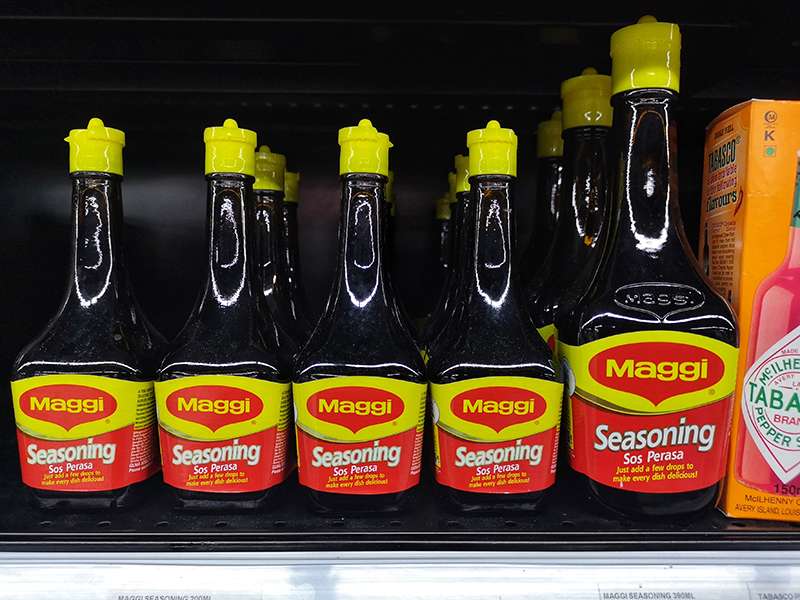
A Switzerland sauce also makes its way into my list. Invented in 1886, Maggi seasoning quickly became one of the best-seller items in the sauce section. Not only is it favored in European countries, but it is also often present in Asian pantries.
Maggi seasoning is a wheat-based sauce that is best used in soups and stir-fries. Additionally, dipping sauces and stews are the delicious treats you can not miss when using this sauce as an alternative for dark soy sauce.
The flavor may be quite different, but it doesn’t deserve to be removed from your list. Give it a try! Similar to tamari, use the 1:1 volume when using this Maggi seasoning.
Note: As Maggi seasoning has high wheat content, consider carefully if you are sensitive to gluten.
10. Fish Sauce

Don’t leave fish sauce behind. This traditional sauce rooted in South East Asia absolutely will be a plot twist of your dish. Although it may have an unpleasant smell the first time you get it, it can be super super super delicious when added to the right recipes!
So, what are some decent recipes for fish sauce?
Well, with all the stews and braises recipes that call for dark soy sauce, take some fish sauce to get the savory taste. Due to the more pungent and saltier taste, substitute ½ tablespoon of fish sauce with 1 tablespoon of dark soy sauce.
Note: Fish sauce is a gluten-free option, but the sodium level is its biggest shortcoming.
11. Miso Paste

If you are looking for an alternative for dark soy sauce in a recipe that does not highly require color, don’t hesitate to pick up this suggestion. Miso paste has a similar taste compared to dark soy sauce.
It also works well as marinades, dressings, soups, stews, and stir-fried recipes. As mentioned above, miso paste will not give you the ideal color like dark soy sauce, but it can add the umami flavor to your food.
For every cup of dark soy sauce, use 1 tablespoon of miso pate. Also, This substitute is in the paste form. Hence, don’t forget to mix with some water before adding to your dish.
12. Balsamic Vinegar

While dark soy sauce is Chinese sweetheart, balsamic vinegar is Italian darling. When it comes to dark soy sauce substitutes, balsamic vinegar is not on the top recommendations. However, if you resist this lovely treat, it will be a huge pity.
With the signature sweetness and saltiness, balsamic vinegar is not the wrong choice. In addition, when using balsamic vinegar, the sour taste will also be blended into your food.
Don’t worry. It will not overwhelm your dishes. As long as you use the precise ratio, the sour taste will be very refreshing. The taste of balsamic is milder than dark soy sauce. As a result, use ½ tablespoons of dark soy sauce to alternate 1 tablespoon of balsamic.
Note: Add this substitute to salad and cold dishes.
Let’s get more information about balsamic vinegar!
13. Liquid Aminos
Liquid aminos is not a friendly substitute for soy-allergic people, but it offers you two intriguing benefits: wheat-free and gluten-free! Liquid aminos is a good option that can help to save your dish in a hurry.
And due to being originated from soybean as well, this sauce brings up a very akin flavor to your food. You can use an equal amount of dark soy sauce, which means 1 tablespoon of liquid aminos vs. 1 tablespoon of dark soy sauce.
About the suitable recipes? Well, use it in dishes such as noodles and soups.
14. Coconut Aminos
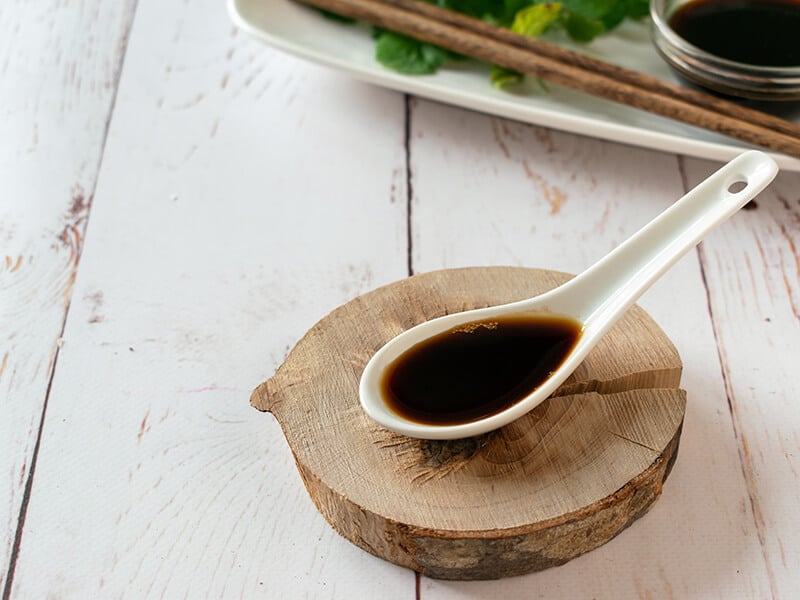
To all who are on a diet, I have this gift for you! Coconut aminos is the healthiest substitute for dark soy sauce ever because it is completely free of wheat, soy, and gluten! Moreover, it is a great choice for vegetarians too!
Since it derives from palm tree sap, it may also offer you some health benefits (2). Coconut aminos is not the ideal substitute for dark soy sauce since it has a more nutty and sweeter taste. Nonetheless, you can add an extra amount of salt to balance the flavor.
Don’t forget to use this sauce in the 1:1 ratio. This is a good start.
Note: If you cannot find it in the nearby supermarket, try to purchase it online.
How To Make Homemade Dark Soy Sauce With Brown Sugar

Wait! Before going to look for some options recommended above, why don’t you try to make your homemade version of dark soy sauce? The other can be good picks, but the original one always should be prioritized!
And you know what? It works as effectively as the in-store version. Skim through this part to have the best homemade version of dark soy sauce!
What You Need To Prepare:
- 1 cup of regular (light) soy sauce
- 1/2 cup of brown sugar
- 1 tablespoon of cornstarch
- 1/4 cup of water
- A bowl
- Saucepan
What You Need To Do:
Step 1: Pour 1 tablespoon of cornstarch into the bowl.
Step 2: Next, add ¼ cup of water and mix them together until cornstarch is well-blended into the water.
Step 3: Add 1 cup of regular (light) soy sauce into your saucepan and adjust to the medium heat.
Step 4: Pour the mixture of cornstarch and water into the saucepan.
Step 5: Add ½ cup of brown sugar into the saucepan.
Step 6: After the mixture boils, turn the heat to low and stir well until the mixture becomes a thick syrup (about 5 minutes).
Step 7: Turn off the heat, let the sauce cool. Then, put it in a glass jar and store it in your fridge.
Make your homemade version of soy sauce. It’s easy!
FAQs
Before leaving, you can take a quick look at these frequently asked questions below. I’m sure it may help to solve some of your remaining questions relating to dark soy sauce.
Make These Dark Soy Sauce Substitutes Your Kitchen Hero!
Above all, I really do hope that this list today can give you a hand in finding a decent choice. You can take note of all of the ratios I have given you and consider carefully to have the best taste.
What is the most perfect pick for your recipes? Remember to choose wisely. All things will automatically be in their order as long as you go with the right ones. And if you have tried any of the above replacements, don’t forget to let me know in the comment section below.
It would be great to read all of the experiences from you all. And they may be helpful for others too!
References
- Dark soy sauce – Wikipedia. En.wikipedia.org..
- Lima, E. B. C., Sousa, C. N. S., Meneses, L. N., Ximenes, N. C., Santos, M. A., Vasconcelos, G. S., … & Vasconcelos, S. M. M. (2015). Cocos nucifera (L.)(Arecaceae): A phytochemical and pharmacological review. Brazilian Journal of Medical and Biological Research, 48, 953-964.
- Cynthia Sass. How Bad Is Soy Sauce for You, Really – Health.com..

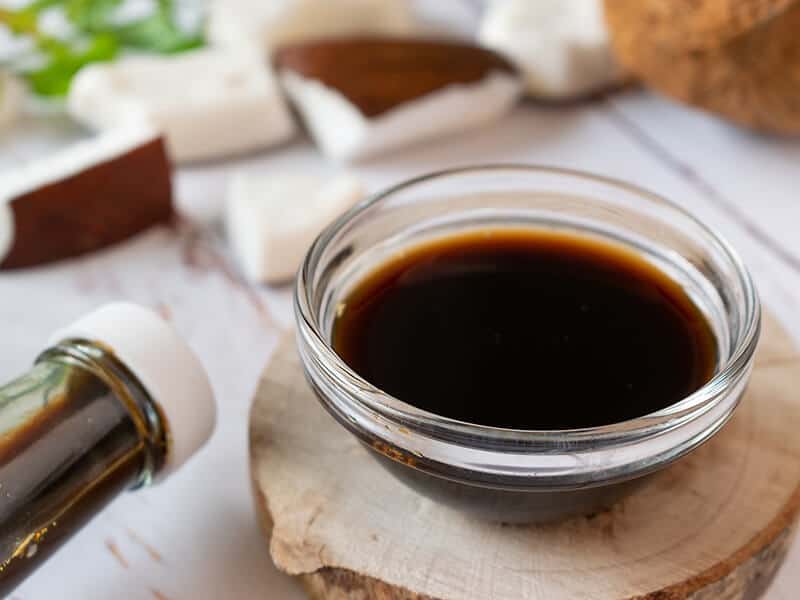


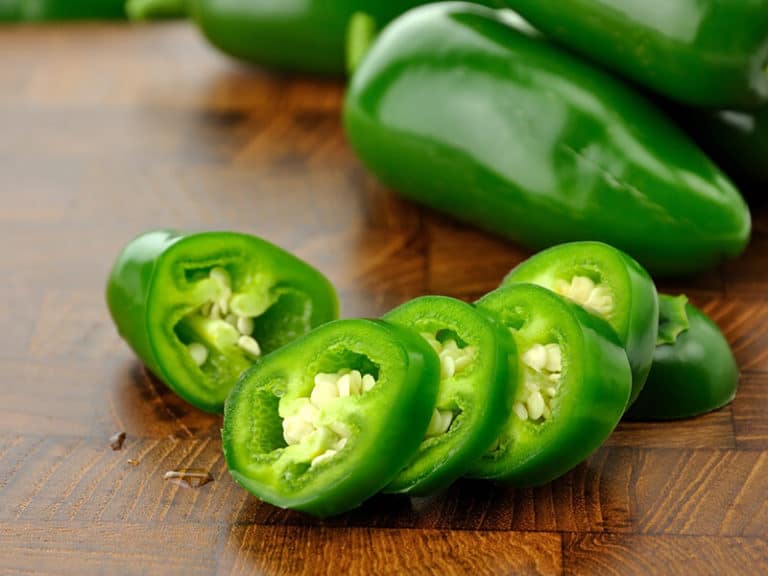



Amanda Collins
Founder and Senior Culinary Editor
Expertise
Culinary Arts and Management, Food Journalism and Critique, Recipe Development and Testing, Global Culinary Traditions, Sustainable Food Practices
Education
Institute of Culinary Education (ICE), New York, NY
Program: Diploma in Culinary Arts
Focus: Intensive hands-on training in culinary techniques, recipe development, and kitchen management, preparing students for professional roles in the culinary industry.
Monroe College, New Rochelle, NY
Program: Associate in Applied Science in Culinary Arts
Focus: Practical culinary skills, including cooking techniques, menu planning, and kitchen operations, with an emphasis on hands-on experience and industry standards.
Amanda Collins is a seasoned chef and food editor with a deep love for global flavors. Trained at the Institute of Culinary Education and Monroe College, and with over 15 years in the culinary field, Amanda has refined her skills in kitchens worldwide. Her background in food studies gives her a unique ability to share both recipes and the cultural stories that shape them.
As senior culinary editor at thebreslin.com, Amanda’s work brings authentic dishes to life, inviting readers to explore new flavors and techniques from around the globe. Her approachable style makes it easy for anyone to bring a bit of the world’s cuisine into their kitchen.